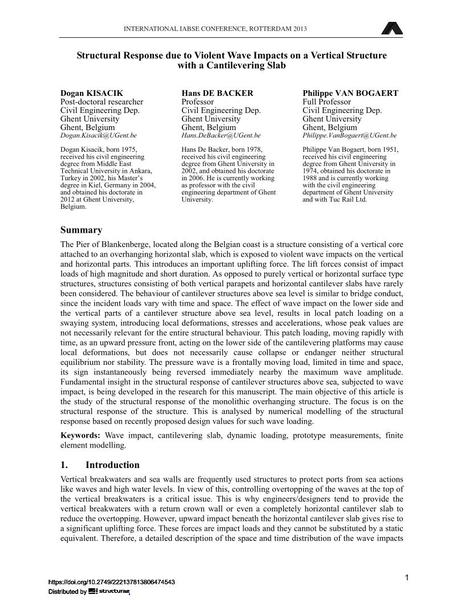|
Abstrait:
|
The Pier of Blankenberge, located along the Belgian coast is a structure consisting of a vertical core attached to an overhanging horizontal slab, which is exposed to violent wave impacts on the vertical and horizontal parts. This introduces an important uplifting force. The lift forces consist of impact loads of high magnitude and short duration. As opposed to purely vertical or horizontal surface type structures, structures consisting of both vertical parapets and horizontal cantilever slabs have rarely been considered. The behaviour of cantilever structures above sea level is similar to bridge conduct, since the incident loads vary with time and space. The effect of wave impact on the lower side and the vertical parts of a cantilever structure above sea level, results in local patch loading on a swaying system, introducing local deformations, stresses and accelerations, whose peak values are not necessarily relevant for the entire structural behaviour. This patch loading, moving rapidly with time, as an upward pressure front, acting on the lower side of the cantilevering platforms may cause local deformations, but does not necessarily cause collapse or endanger neither structural equilibrium nor stability. The pressure wave is a frontally moving load, limited in time and space, its sign instantaneously being reversed immediately nearby the maximum wave amplitude. Fundamental insight in the structural response of cantilever structures above sea, subjected to wave impact, is being developed in the research for this manuscript. The main objective of this article is the study of the structural response of the monolithic overhanging structure. The focus is on the structural response of the structure. This is analysed by numerical modelling of the structural response based on recently proposed design values for such wave loading.
|

